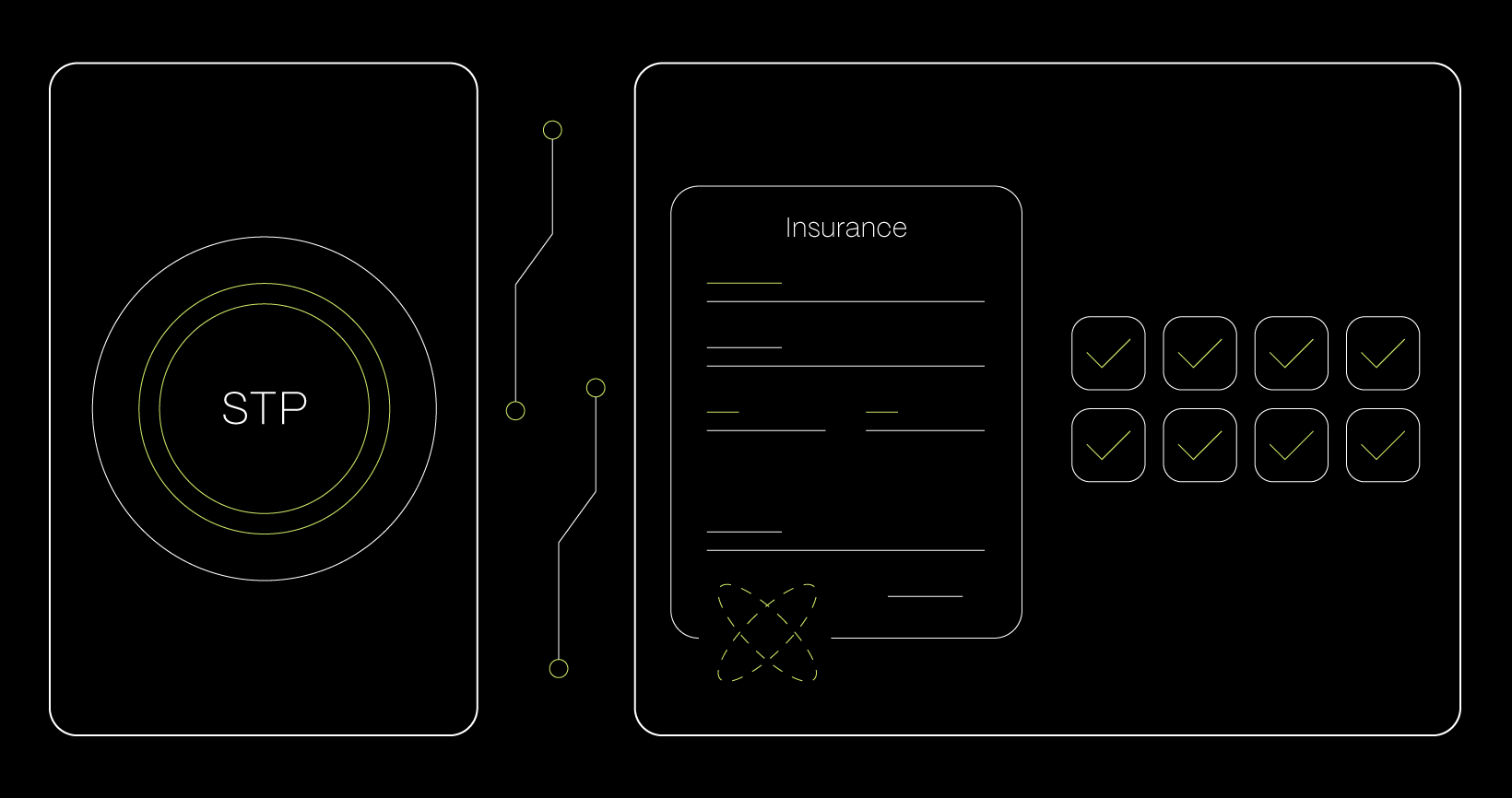STP is about empowering underwriters, not replacing them
Straight-through processing enables insurance placements to move seamlessly from submission to policy without manual intervention, improving speed, accuracy, and profitability.

The pressure point: Too much volume, too little capacity
No underwriter ever joined the insurance industry to re-key data or fix formatting errors in schedules of values. Yet that’s how too many teams still spend their days.
As high-volume, low-premium risks grow and margins tighten, underwriting capacity is stretched thin. Processing every transaction manually simply doesn’t scale, and valuable business is left behind because teams are tied up in operational noise.
The result is delays, missed opportunities, and growing frustration on both sides. Clients are waiting longer for quotes, and underwriters are losing time they should spend on more complex risk assessments.
Given that, I can freely say it’s not just inefficient but a barrier to growth.
What STP is and how it transforms transaction handling
Straight-through processing (STP) is when a transaction moves end-to-end without any manual touchpoints. Whether it is a policy, claim, endorsement, premium payment, or Bordereaux report, the data flows seamlessly from broker to underwriter to carrier to back-office, validated automatically and written directly into the system of record.
Achieving this level of automation requires both discipline and technology. Structured data standards, such as ACORD or the Core Data Record under Lloyd’s Blueprint Two, define a common format for policy, claims, and Bordeaux data, ensuring consistency and reducing errors.
On the other hand, various solutions (such as risk placing platforms and underwriting workbenches) on the market allow brokers and underwriters to communicate directly. Business rules engines within these platforms automatically perform underwriting checks, compliance validation, and sanctions screening, flagging only exceptional cases for human review. This combination of structured data and connected systems allows transactions to flow seamlessly while maintaining accuracy and control.
Unsurprisingly, the benefits of such an approach are immediate and tangible. Transactions are processed faster, data quality improves, and underwriters are freed from repetitive administrative work. Instead of re-keying or correcting errors, they can focus on the decisions that truly add value, applying their expertise where it makes the biggest difference. STP is not automation for its own sake; it is a way to scale human expertise without sacrificing accuracy or control.
Increasing efficiency without losing judgment
Full automation isn’t realistic for every placement, especially in the London Market, where every risk requires underwriting judgment to some extent. However, certain steps can still be automated through predefined appetite rules, allowing routine submissions to be quoted faster and with greater consistency.
Even in renewals or endorsements, automation can assist with data validation and document checks, while leaving the final review and decision to the underwriter.
Above all, this kind of digital transformation isn’t just about technology. In fact, it’s about reshaping how brokers, underwriters, and managing agents collaborate across the value chain.

Blueprint Two: Digital overhaul of the Lloyd’s market is underway
Lloyd’s ambitious digital transformation program, known as Blueprint Two, aims to completely modernise how insurance is placed, processed, and claimed within the Lloyd’s market, replacing manual tasks and fragmented systems with streamlined, data-driven workflows. Learn more about it and what challenges it brings.
Read moreThe bigger payoff
When implemented effectively, straight-through processing (STP) transforms the economics of underwriting. Underwriters can handle a higher volume of transactions without increasing headcount, allowing smaller, repeatable businesses that were previously unprofitable to become a consistent source of revenue. For instance, Mountain West achieved an 86% STP rate for high-volume personal lines, significantly enhancing efficiency.
The quality of data improves, providing a more accurate basis for pricing, reserving, and risk modelling. Automated underwriting enables insurance providers to reduce underwriting times by 40–70%, enhancing both productivity and customer experience.
Brokers benefit from faster quote-to-bind cycles and fewer follow-ups, which strengthens relationships and enhances trust. For the business as a whole, STP delivers healthier margins on low-premium policies while freeing the underwriting team to focus on complex risks and strategic portfolio decisions. In this way, STP is not just an efficiency tool; it becomes a driver of growth, profitability, and market competitiveness.
The importance of a technology enabler
True straight-through processing depends on connected systems, structured data, and intelligent automation. APIs and data exchange layers connect broker and insurer platforms, ensuring that every transaction is based on a single, verified source of truth. AI and document intelligence technologies further enhance this by converting unstructured documents such as Market Reform Contracts or bordereaux into clean, machine-readable data that can flow automatically through underwriting and policy systems.
At Vega IT, we help insurers turn this concept into a working reality through:
- system integration layers that link broker platforms, policy administration systems, and back-office tools to enable seamless end-to-end data flow;
- workflow engines that automate decision-making processes such as data validation, compliance checks, and basic underwriting rules;
- AI-powered data extraction to convert unstructured documents into structured, machine-readable formats ready for automated processing;
- scalable architecture design that allows insurers to modernise without replacing core systems, supporting future automation initiatives;
- data quality and governance support, ensuring that all automated flows are accurate, auditable, and aligned with market standards such as ACORD and Lloyd’s Blueprint Two.
By combining technical expertise with deep industry knowledge, we enable insurers to move from isolated automation projects to a connected, intelligent operating model, improving efficiency, visibility, and control across the underwriting value chain.




